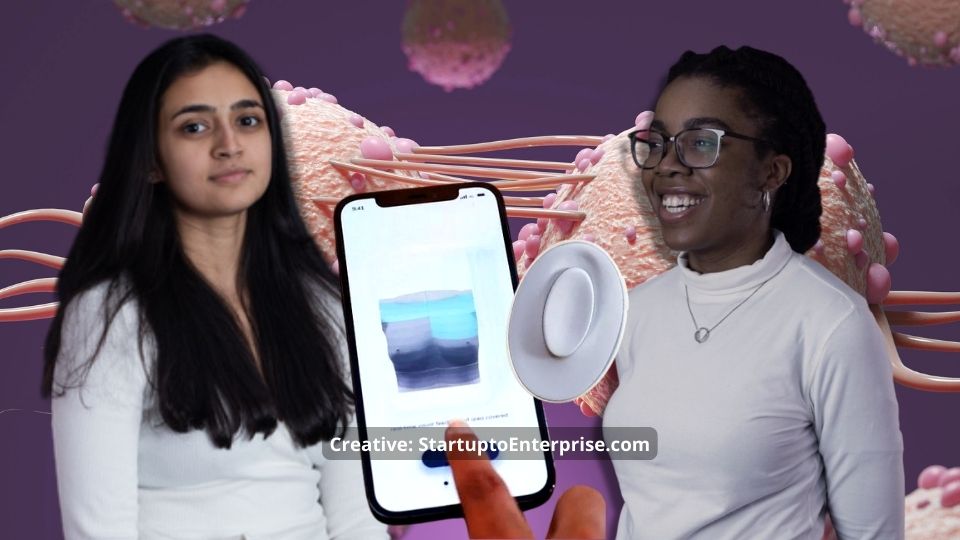

Dotplot is a monthly self-check guide for monitoring breast health at home. It’s meant to help women catch breast cancer in its earliest stages by empowering and inspiring them to maintain a consistent self-examination schedule.
Founded by Shefali Bohra and Debra Babalola, Dotplot helps women observe an anomaly in breast tissues over time. It is important to note that the product is not a machine that can immediately conclude if the anomaly is cancer or not. It needs clinical correlation.
Dotplot requires users to go through a one-time onboarding process, during which they are prompted to provide information about their period cycle (if they have one) to provide an accurate date for their self-check. After entering their bra size and breast form, as well as sliding the handheld device, they can rescale the baseline model into a custom map of their torso.
Users need to self-check by showing which areas they need to scan—Dotplot’s pre-trained system analyses the device’s orientation. A sound frequency at established medical grade is emitted to record the tissue composition at the site, and then the study is compared each month to highlight any abnormalities developing in the tissue.
50 women trialed the prototype to detect lumps up to 15mm deep. With machine learning, the product is guided to interpret different lump sizes at different depths and features. With constant discussions with breast cancer surgeons, radiologists, GPs, and other professionals for scientific validation, Dotplot is under continuous technological development to determine how it would fit into the medical landscape, with a lack of its kind in the market.
Existing and developing scanners and equipment are primarily intended for therapeutic applications. Dotplot is designed for home use to give women more control over breast health care. Additionally, our gadget is approximately one-third the size of traditional scanners, making it less resource-intensive and a more attractive product. In addition, no commercially available product can provide real-time feedback on the areas covered during a breast self-examination. This feature is essential for guaranteeing that women have inspected all regions.
The founders of Dotplot, Shefali Bohra and Debra Babalola, are now working on creating an MVP assembling the two features, i) lump detection and ii) locating the device on the user’s body – in one device. Following the MVP, the duo plans to work with asymptomatic breast cancer clinics and medical regulatory advisors to run and audit their first clinical trial for an efficacy test. There are also plans to apply the technology for early detection of other cancers and illnesses, including testicular cancer and soft tissue sarcoma.
Therefore, it is not a surprise for the founders of Dotplot, Shefali Bohra and Debra Babalola, to have won the Venture Catalyst Challenge, Imperial College’s largest entrepreneurial competition and the Helen Hamlyn Design Award for Digital Inclusion sponsored by TATA Consultancy Services. Winning the prestigious James Dyson Award 2022 has therefore been a no-brainer. ♦

